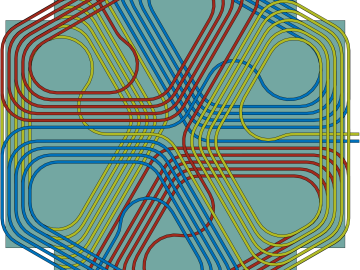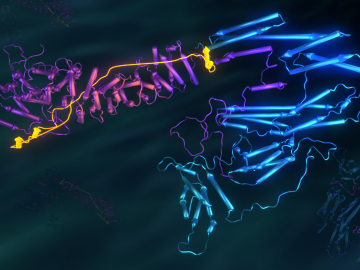
Filter News
Area of Research
- Advanced Manufacturing (1)
- Biological Systems (1)
- Biology and Environment (14)
- Computational Biology (1)
- Computer Science (2)
- Electricity and Smart Grid (1)
- Energy Science (40)
- Fusion and Fission (2)
- Fusion Energy (6)
- Isotopes (1)
- Materials (16)
- Materials for Computing (3)
- National Security (3)
- Neutron Science (23)
- Nuclear Science and Technology (6)
- Quantum information Science (1)
- Sensors and Controls (1)
- Supercomputing (6)
- Transportation Systems (2)
News Type
News Topics
- (-) Bioenergy (17)
- (-) Biomedical (11)
- (-) Fusion (9)
- (-) Grid (22)
- (-) Molten Salt (5)
- (-) Neutron Science (27)
- (-) Transportation (36)
- 3-D Printing/Advanced Manufacturing (34)
- Advanced Reactors (13)
- Artificial Intelligence (16)
- Big Data (17)
- Biology (21)
- Biotechnology (4)
- Buildings (21)
- Chemical Sciences (13)
- Clean Water (14)
- Composites (11)
- Computer Science (42)
- Coronavirus (11)
- Critical Materials (12)
- Cybersecurity (3)
- Emergency (1)
- Energy Storage (32)
- Environment (48)
- Exascale Computing (1)
- Fossil Energy (1)
- Frontier (1)
- High-Performance Computing (12)
- Hydropower (6)
- Irradiation (2)
- Isotopes (5)
- ITER (3)
- Machine Learning (14)
- Materials (36)
- Materials Science (34)
- Mathematics (3)
- Mercury (3)
- Microscopy (11)
- Nanotechnology (12)
- National Security (3)
- Nuclear Energy (19)
- Partnerships (2)
- Physics (4)
- Polymers (10)
- Quantum Computing (5)
- Quantum Science (11)
- Security (1)
- Simulation (9)
- Space Exploration (10)
- Statistics (1)
- Summit (8)
Media Contacts

The prospect of simulating a fusion plasma is a step closer to reality thanks to a new computational tool developed by scientists in fusion physics, computer science and mathematics at ORNL.

To better determine the potential energy cost savings among connected homes, researchers at Oak Ridge National Laboratory developed a computer simulation to more accurately compare energy use on similar weather days.

As scientists study approaches to best sustain a fusion reactor, a team led by Oak Ridge National Laboratory investigated injecting shattered argon pellets into a super-hot plasma, when needed, to protect the reactor’s interior wall from high-energy runaway electrons.

ORNL researchers created and tested new wireless charging designs that may double the power density, resulting in a lighter weight system compared with existing technologies.

Researchers used neutron scattering at Oak Ridge National Laboratory’s Spallation Neutron Source and High Flux Isotope Reactor to better understand how certain cells in human tissue bond together.

Researchers at Oak Ridge National Laboratory proved that a certain class of ionic liquids, when mixed with commercially available oils, can make gears run more efficiently with less noise and better durability.

Researchers used neutron scattering at Oak Ridge National Laboratory’s Spallation Neutron Source to probe the structure of a colorful new material that may pave the way for improved sensors and vivid displays.

Using additive manufacturing, scientists experimenting with tungsten at Oak Ridge National Laboratory hope to unlock new potential of the high-performance heat-transferring material used to protect components from the plasma inside a fusion reactor. Fusion requires hydrogen isotopes to reach millions of degrees.

Scientists at Oak Ridge National Laboratory studying quantum communications have discovered a more practical way to share secret messages among three parties, which could ultimately lead to better cybersecurity for the electric grid

A team of researchers at Oak Ridge National Laboratory have demonstrated that designed synthetic polymers can serve as a high-performance binding material for next-generation lithium-ion batteries.


